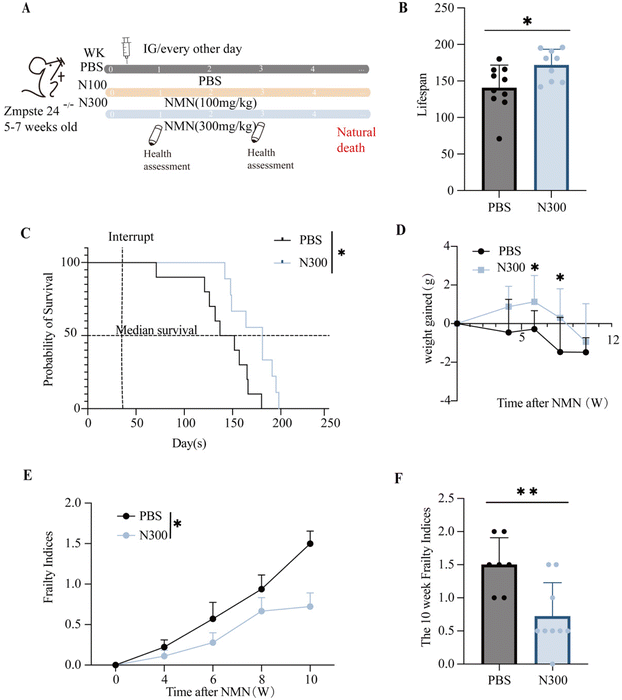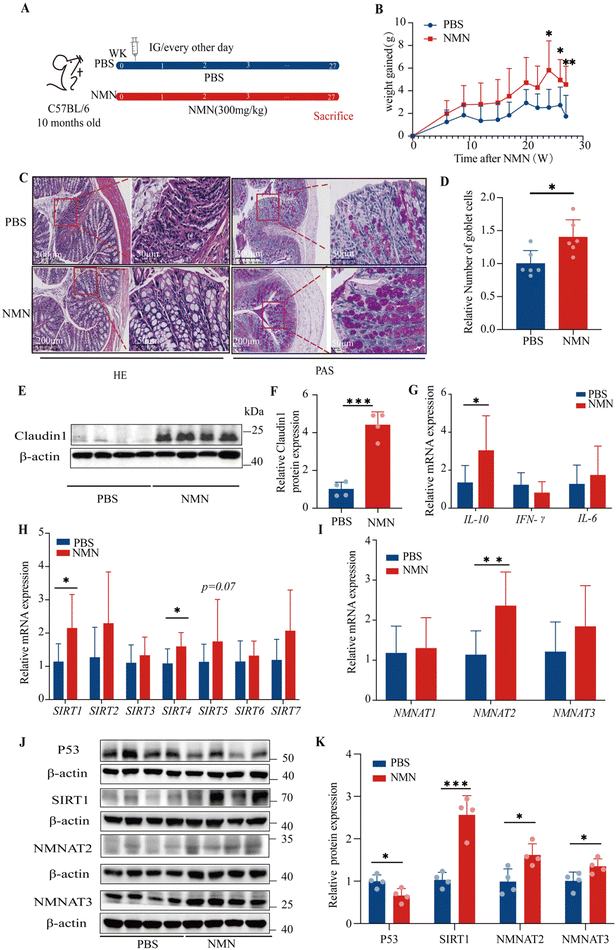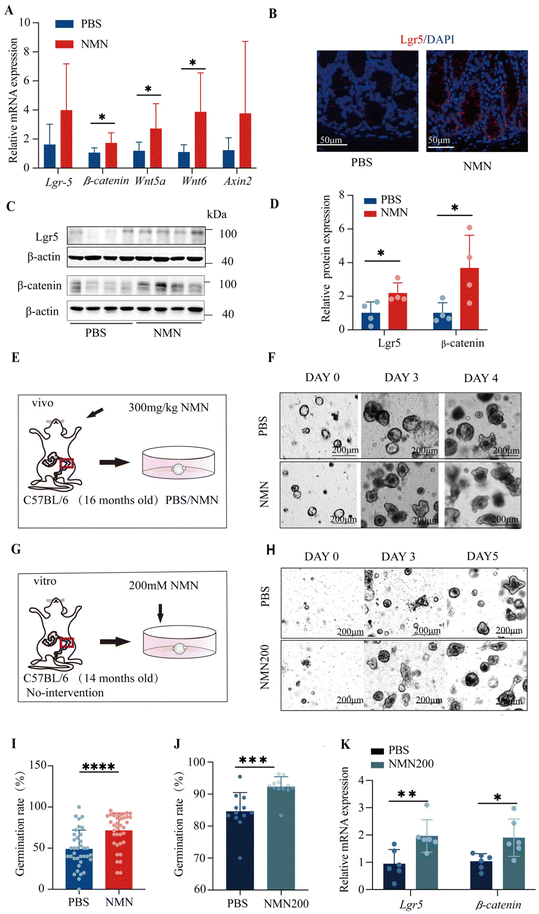
01 Jan
Fathoming Out the Role of NMN in Maintaining the Colon Health of Ageing Mice

Introduction
The gut is a diverse and dynamic microbiotic system. There are about 100 trillion microorganisms in the gut, which is mainly composed of anaerobic, partially anaerobic, and aerobic bacteria. In the process of ageing, the intestinal tract may show an increase in the permeability of the epithelial barrier and impaired tight junction proteins. Notably, supplementing β-Nicotinamide mononucleotide (NMN) to elevate NAD+ level has been proved to prolong life and maintain the colon health in ageing Mice.
Research protocol
Zmpste24−/− mice are frequently used in the construction of the prematurely ageing model, due to their features of slow weight gain, malnutrition and progressive hair loss, with a short median survival of about 20 weeks. Herein, to fathom out the role of NMN in maintaining the colon health of ageing mice, Zmpste24−/− mice aged 5-7 weeks are orally gavaged with phosphate-buffered saline (PBS), or NMN at 100/300 mg kg−1 every other day until natural death. Likewise, natural ageing C57BL/6 mice aged 10 months old are subjected to the oral gavage of PBS or NMN at 300 mg kg−1, serving as the the control. During experiments, the body weight of mice is recorded, and their frailty index and fecal samples are detected.
The life span and frailty indices in Zmpste24-/- mice after NMN treatment
NMN extends the healthy and median lifespan of Zmpste24−/−improves the Zmpste24−/− ageing phenotype. Specifically, the median lifespan of the mice is increased from 21.4 weeks to 25.7 weeks post NMN intervention, with more than 20% growth. Also, NMN effectively increases body weight. Meanwhile, mice have better overall health after NMN treatment, as manifested by the slowly increasing trend towards Sinclair’s frailty indices.


The role of NMN in the intestinal tract of ageing mice
NMN adjusts the activity of genes involved in ageing mice colons. Simply put, in the presence of NMN supplement, the protein level of transcriptional regulator P53 is reduced, while the expression levels of ageing marker Sirt1, NMNAT2 and NMNAT3 are elevated.

NMN improves the pathology of intestinal epithelial cells and intestinal permeability, as evidenced by the upregulation of intestinal tight junction protein (Claudin1,) and the number of goblet cells, the elevated release of anti-inflammatory factor (IL-10), and the increasing beneficial intestinal bacteria (Akkermansia muciniphila and Bifidobacterium pseudolongum).



NMN improves the pathology of intestinal epithelial cells and intestinal permeability, as evidenced by the upregulation of intestinal tight junction protein (Claudin1,) and the number of goblet cells, the elevated release of anti-inflammatory factor (IL-10), and the increasing beneficial intestinal bacteria (Akkermansia muciniphila and Bifidobacterium pseudolongum).


Conclusion
NMN supplementation exerts a protective effect on colon mucosa by controlling the activity of genes involved in ageing, intestinal stem cell differentiation and improving intestinal flora homeostasis, which may be a viable strategy for maintaining healthy ageing in the gut.
Reference
Yanrou Gu, Lidan Gao, Jiamin He et al. β-Nicotinamide mononucleotide supplementation prolongs the lifespan of prematurely aged mice and protects colon function in ageing mice. Food Funct., 2024 (15): 3199-3213. DOI: 10.1039/D3FO05221D
BONTAC NMN
BONTAC is the pioneer of NMN industry and the first manufacturer to launch NMN mass production, with the first whole-enzyme catalysis technology around the world. At present, BONTAC has become the leading enterprise in niche areas of coenzyme products. Notably, BONTAC is the NMN raw material supplier of famous David Sinclair team at the Harvard University, who uses the raw materials of BONTAC in a paper titled “Impairment of an Endothelial NAD+-H2S Signaling Network Is a Reversible Cause of Vascular Aging”. Our services and products have been highly recognized by global partners. Furthermore, BONTAC has the first national and the only provincial independent coenzyme engineering technology research center in Guangdong, China. The coenzyme products of BOMNTAC are widely used in fields such as nutritional health, biomedicine, medical beauty, daily chemicals and green agriculture.


Disclaimer
This article is based on the reference in the academic journal. The relevant information is provided for sharing and learning purposes only, and does not represent any medical advice purposes. If there is any infringement, please contact the author for deletion. The views expressed in this article do not represent the position of BONTAC.
Under no circumstances will BONTAC be held responsible or liable in any way for any claims, damages, losses, expenses, costs or liabilities whatsoever (including, without limitation, any direct or indirect damages for loss of profits, business interruption or loss of information) resulting or arising directly or indirectly from your reliance on the information and material on this website.
Under no circumstances will BONTAC be held responsible or liable in any way for any claims, damages, losses, expenses, costs or liabilities whatsoever (including, without limitation, any direct or indirect damages for loss of profits, business interruption or loss of information) resulting or arising directly or indirectly from your reliance on the information and material on this website.
